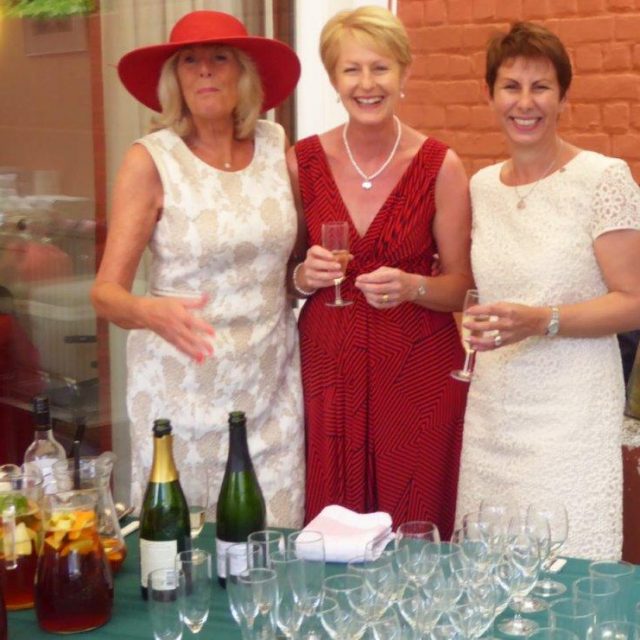It’s arguably one of the least visited of Belgium’s ten provinces but lovely Limburg is well worth discovering.
The area was, economically, devastated a decade or so ago when the giant Ford car factory closed, with the loss of over 10,000 jobs.
Limburg was forced to reinvent itself and it has done just that remarkably well, with its provincial capital, Hasselt, showcasing the best of the region.
While it was, once, suffering the fall out of that crushing economic blow this clean and pleasant city is now a flagship of entrepreneurial skills and endeavour.
Guided tours
A good start to witness some of this, and hear about the impressive local history, is with a town tour and they don’t come much better than local chemistry secondary schoolteacher Kristof Van Verde whose expertise on the city and area is second to none.
The 44-year-old first explains why, in his opinion, most people visit Hasselt and its environs: first, a local historic abbey; second, the European-recognised regional product, Jenever (without which there would be no gin) and, thirdly, the cycling.
But it’s worth a visit even if you just come for a couple of these. More on each later.
Back in the 14th century, only 500 or so people lived in Hasselt (it is 80,000 now) and, over the centuries, Virga Jessbasiliek on Kapelstraat has remained the most significant place of worship locally.
It is here that you will find a statue which is paraded around the city every 7 years as part of an ancient major tradition which is associated with a miracle that happened here (you will have to wait for the next one as the last such parade was just last year).
Kristof skilfully explains the history of this marvellous church as with other things such as the Genever festival, held on the third weekend of October which attracts up to 30,000 people (the drink has a museum all of its own where you get the chance to enjoy a taster of the genever). He explains why the drinking still has to stop by 8pm on that days and also details the interesting story behind the strong beers that Belgium is associated with.
One of the fascinating things about this small city – the diameter is 800 metres so you can get everywhere on foot in no time and almost the entire centre is traffic-free – is the clever and wonderful street art.
It has over 100 graffiti and street art works by some of the best national and international artists out there (try and spot ROA’s giant owl across the water where you’ll also find the world’s larges QR code a little further down the path).
Your guide will take you through the different themes as you meander around the centre which has, as its beating heart, the Grote Markt where you can watch daily life unfold. Piet Stockman’s Waterpad (The Water Path) gives the Markt an artistic touch and you can listen to the carillon from here too.
Other central “must sees” include the fashion museum, located in a century-old abbey, tells the story of the region’s historic importance as a mainstay of the fabric/clothing industry, and also the Japanese Garden, spread across 2.5 hectares and said to be the biggest of its kind in the whole of Europe.Here you can take a leisurely stroll and become totally Zen.
Just out of town is one of those 3 big local attractions that Kristof recommends: the site of Herkenrode Abbey.
This was once the richest women’s convent in the Low Counties and, today (about 3 years after the Cistercian nuns finally left) it is an “experience centre” set in a green oasis of some 100 hectares.
The abbey was once very nearly turned into a factory and stables but, thanks partly to the Flanders Heritage Foundation, is has been brought back to life and there are, currently, efforts by two local artists to rebuild an on-site church that was burnt down many years ago. British visitors might like to know that some of its beautiful stained glass windows, which has been previously sold to industrialists in auction, can now be seen at Lichfield Cathedral near Birmingham.
Capital of good taste
For years, Hasselt has been known as the capital of good taste, based on its tradition for good food and fashion.
One excellent local example of the former is De Boulevard which has been given a recent makeover of its menu (on a cinematic theme with dishes under headings like “Classiques Du Cinema” and “Sunset Boulevard”) and is a great place to sate any appetite accrued from enjoying the many local attractions.
It actually opens from breakfast until late (though the kitchen closes at 9.30pm) to hotel and non-hotel guests and the imaginative “Friends and Famous” menu features some great Belgian classics such as carpaccio, croquettes, croquet, carbonnades and tartare de boeuf.
Much of this, including the soup, is all homemade.
This is the fine work of its Belgian head chef Marc Du Pont, ably assisted by sous chef Eddy Sallaerts and also welcoming staff members like Pascal.
This delightful 120-seat resto is great for a full-blown meal or, on a fine day, just to sit and enjoy a drink or aperitif on the terrace (seating up to 100).
Worth noting that Hasselt businesses won 5 of the 11 prizes at the Belgian Vegan Awards.
Where to stay
The restaurant is on the ground floor of the Holiday Inn which makes for a terrific place to stay as it is pretty much in the centre of the city and also benefits from a large underground car park.
Its general manager (and also of the 89-room Holiday Inn Express 200m away) is Patrik Roosenboom.
He arrived here a couple of years ago but many of the staff have been here much long, always a great sign in the ever-evolving horeca industry.
Patrik, who has a wealth of experience in the industry, explains how the city and area were forced to also evolve following the Ford factory closure and that the local economy has “gone up a gear” with the presence of a diverse mix of businesses.
The hotel itself, which has 108 rooms and also 5 meeting rooms, benefits from this corporate trade, particularly during the week, while, at weekends, tourists and visitors generally account for most overnight stays.
Interesting to note that the travel time from Brussels national airport at Zaventem can, in effect, be no more to Hasselt than to central Brussels, which is another reason why the city (and hotel) find themselves on an upward trajectory.
Patrik, who hails from Brussels and now does a 45-minute daily commute to work, says the hotel’s “vibe” – one of calmness and agreeable pace of life – matches that of Hasselt itself.
It is also a very friendly hotel where, if you show up with a dog, for instance, the staff will instantly offer your pet a bowl of water and biscuit to munch on. How many places do that?
For those travelling with kids the hotel boasts well-appointed and tastefully-decorated connecting rooms.
This was, in fact, the very first internationally branded hotel in Hasselt (there are now six) when it opened some 35 years ago (the Holiday Inn Express followed a decade later) and the fact that business is still booming reflects its quality and excellent reputation (customer satisfaction rates for cleanliness here, for example, top the 90percent mark).
It also reflects the high standard set by and expected of by Patrik himself, who celebrates 20 years in the horeca trade on 1 October.
Café culture
Before you leave Hasselt, check out another lovely spot: Marlo’s, a small café which opened just over 7 years ago and is one of the “hip” local places to be seen.
You can eat cuisines from around the world where, from Mexico to Asia, and you’re also welcome to opt for the “all day breakfast” in the middle of the afternoon (it closed at 5pm during the week and 7pm on Saturday) if that’s your thing.
HasPas
One fab way to sample this place is the “Haspas” which comes at a very low price and allows you to discover local hotspots, cool shops and trendy coffee bars.
It also affords admission (at a reduced price) to a multitude of local museums, including the Jenever Museum, Fashion Museum,Japanese Garden and Herkenrode Abbey.
It is available from the office of Visit Hasselt where you can also obtain info on local bike rental which is a fantastic way to enjoy one more of tour guide Kristof’s 3 must do’s… cycling.
Hasselt is the ideal base from which to discover the Limburg region.
That is why Visit Hasselt developed 4 new cycling routes to Limburg’s top attractions such as Alden Biesen and C-Mine at Genk.
You always start in Hasselt to follow the routes via the junctions of the cycle route network Limburg.
The area will, as every year, be a magnet for the young very soon who will descend on Hasselt for the annual, four-day Pukkelpop festival which this year will be held between 14 and 17 August and attracts both international star acts and up and coming talent.
So, there you have it, the ideal destination for a happy holiday…Hasselt.
Further info:




